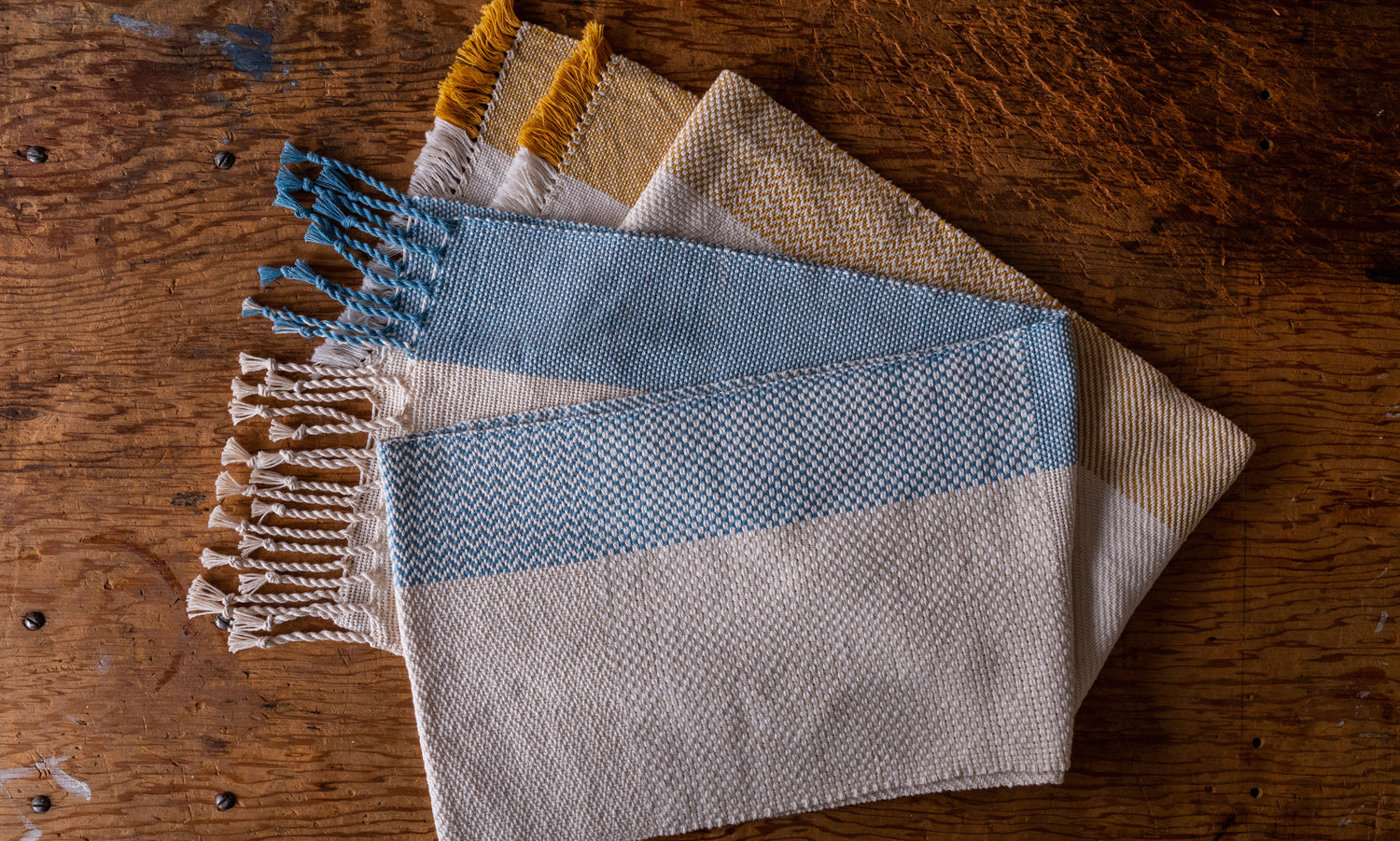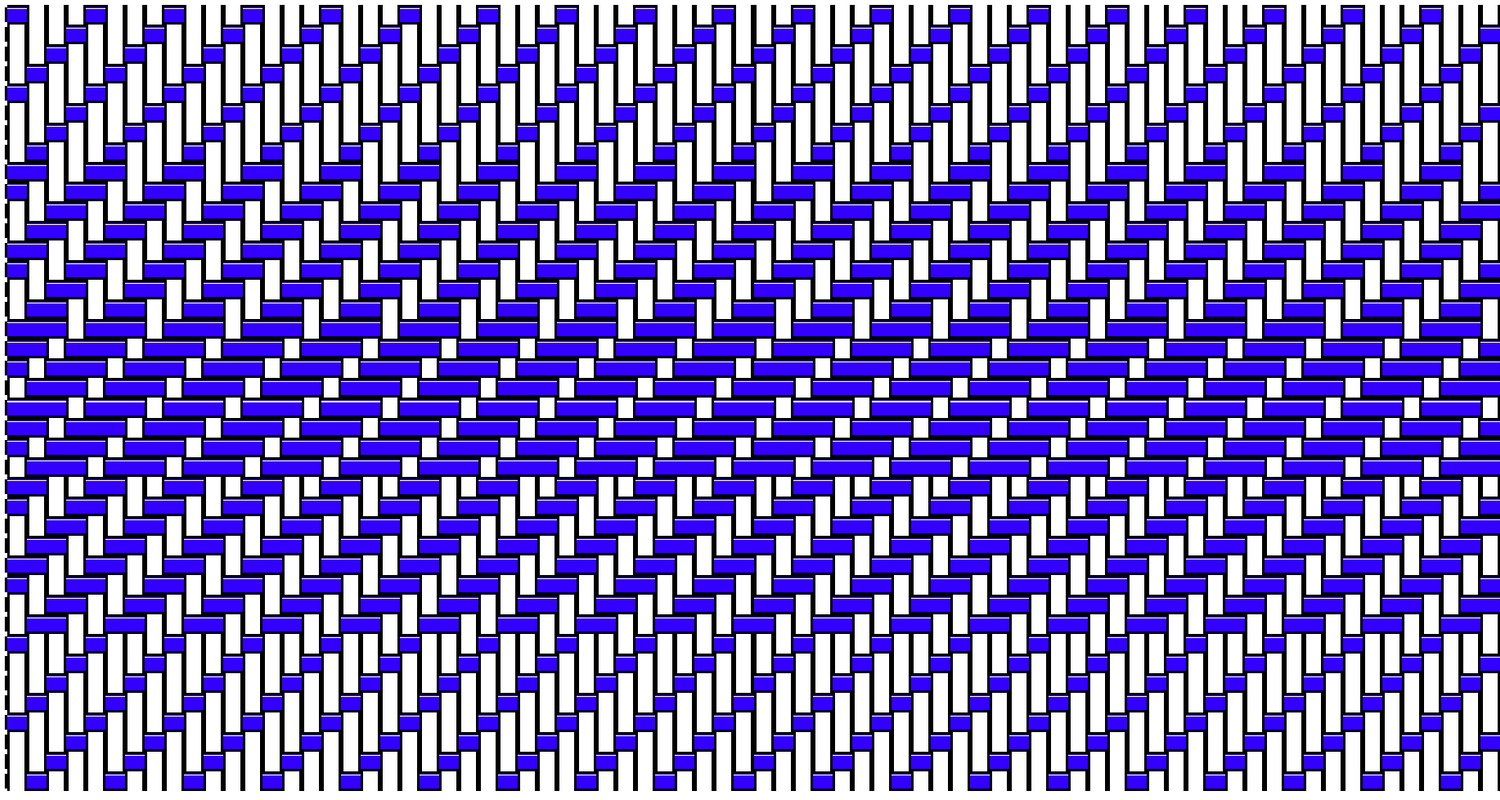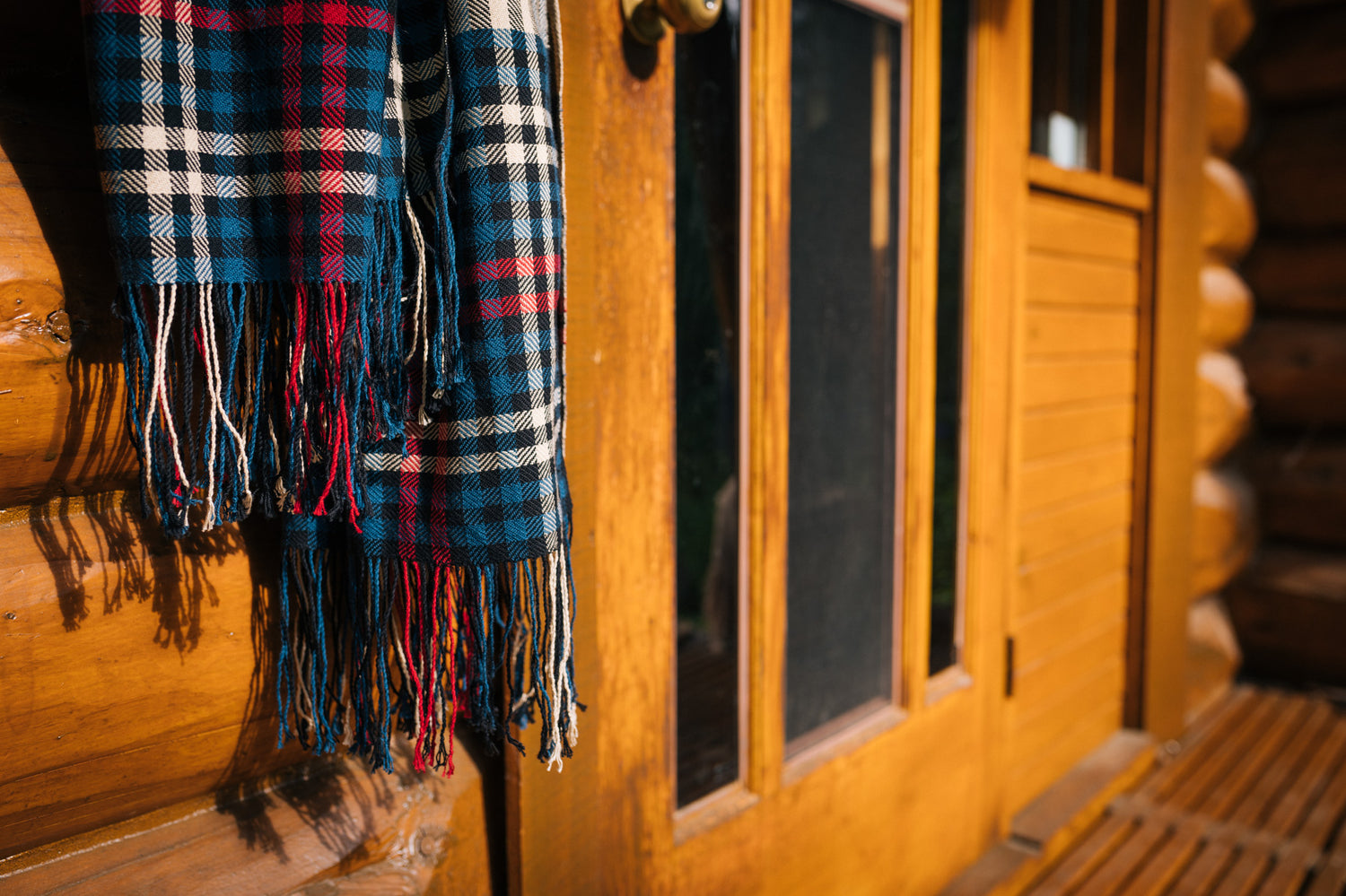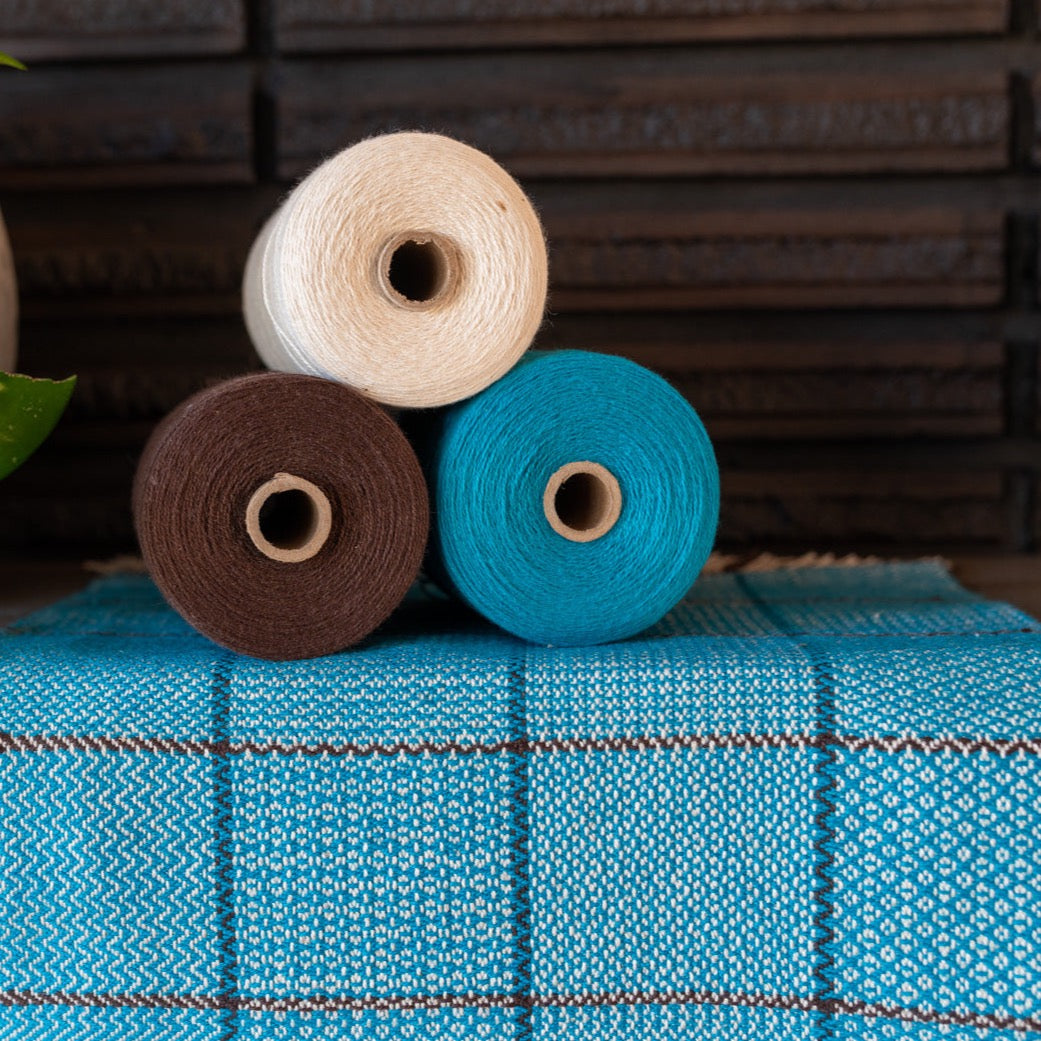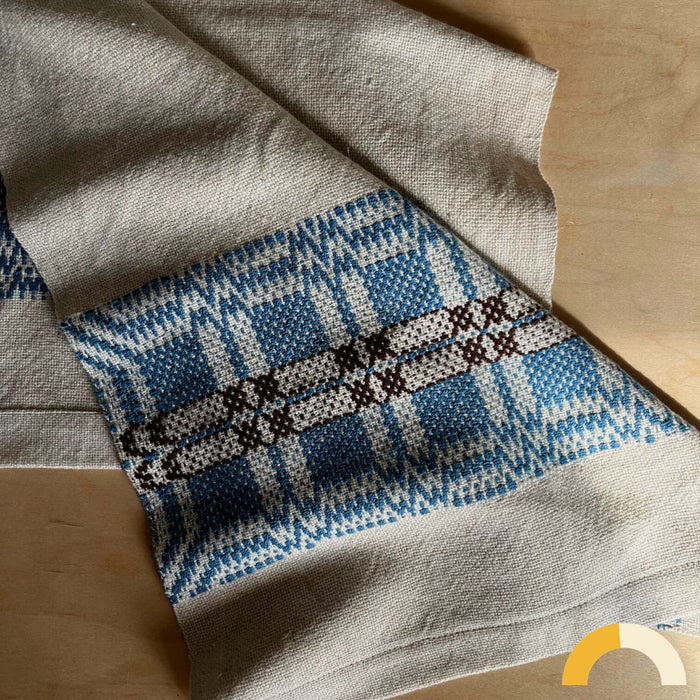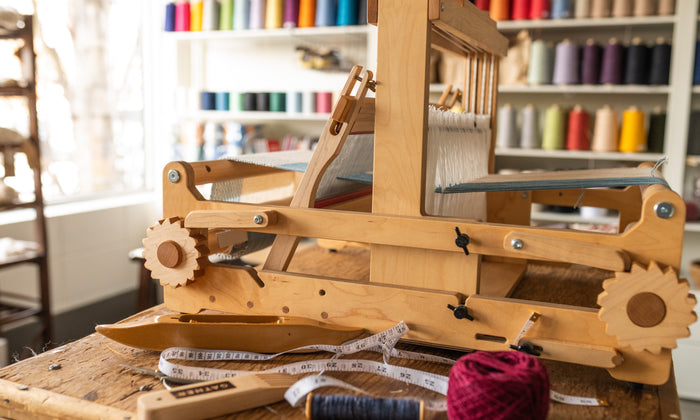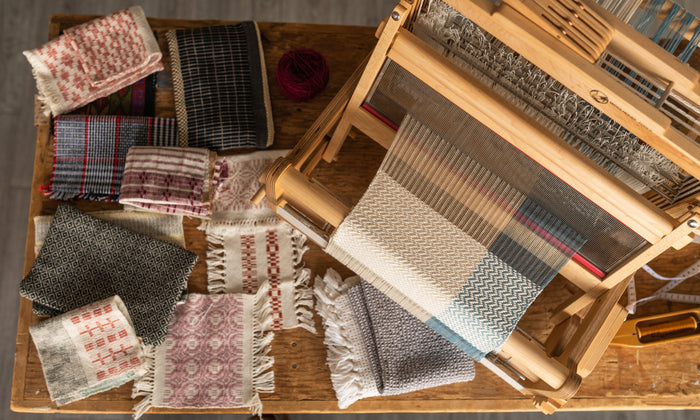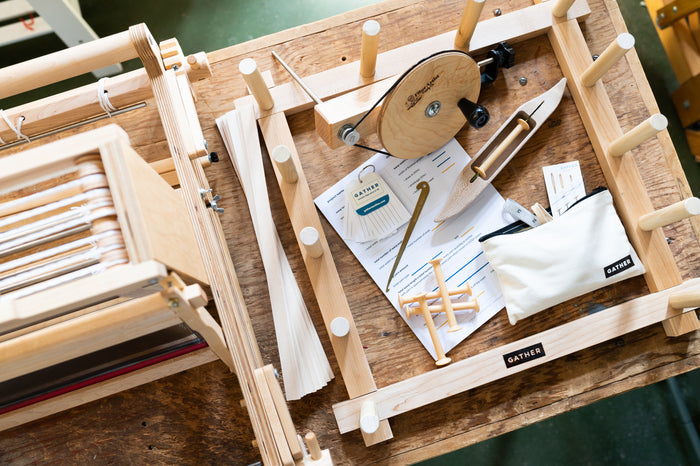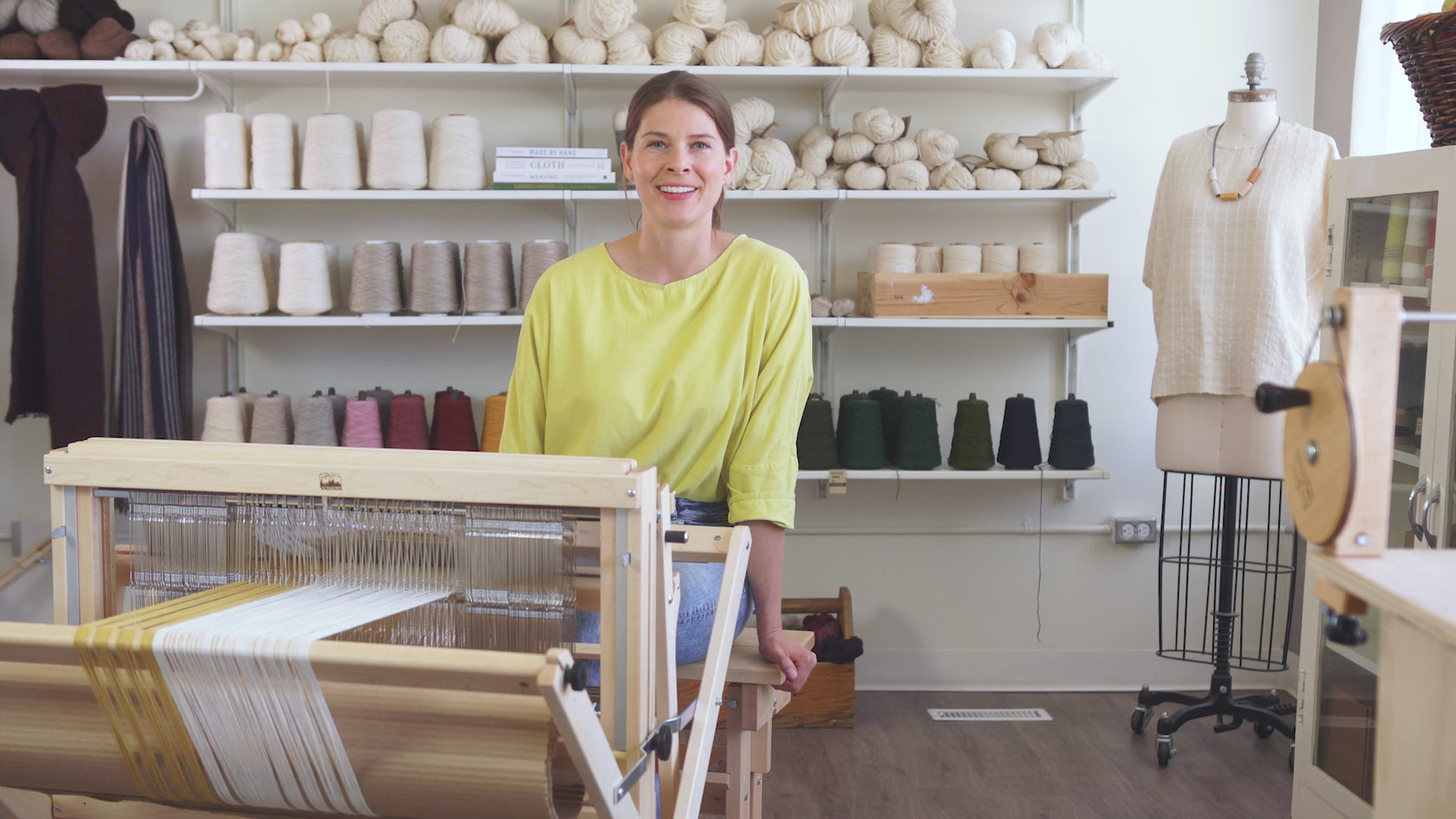After plain weave, twill is THE fundamental weave structure.
It makes beautiful simple cloth with diagonals, zigzags and diamonds. Twill is also the foundation of more complex structures like overshot and crackle.
What is Twill?
Twill is a family of weaving structures characterized by strong diagonal lines. Think of the diagonal lines you see in your jeans as a key example.
The characteristic diagonal lines in twill are created by weaving short, regular weft floats and then shifting them one thread over with each pick of weft.
Twill is normally woven as simple cloth: one weft, one shuttle, one unified structure.
Balanced and Unbalanced
So if twill is characterized by regular weft floats... how many threads are in each float? And are the floats the same width on the front and back of the cloth?
There are options!
In the most common version of twill, each weft thread goes over two warp ends, then under two warp ends. We call this 2/2 Twill.
Because the floats on the front and the floats on the back are both 2 warp ends wide, this is a balanced twill.
2/2 Twill
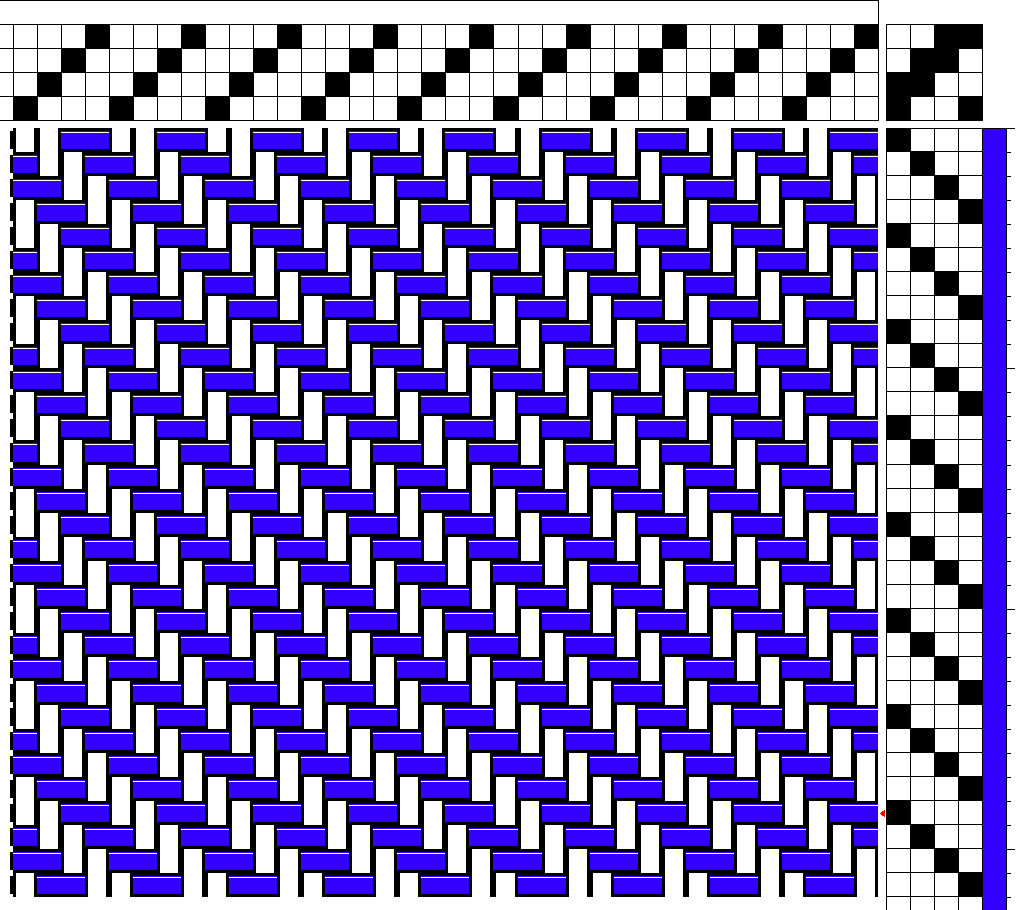
In balanced 2/2 twill, warp and weft are equally visible. The back and front of the cloth look the same.
But what if instead of making nice, even floats, we pushed things a little bit in one direction or the other?
Unbalanced twills have longer floats on one face of the cloth than on the other.
3/1 Twill goes under three warp ends, then over one.
1/3 Twill goes under one warp end, then over three.
3/1 Twill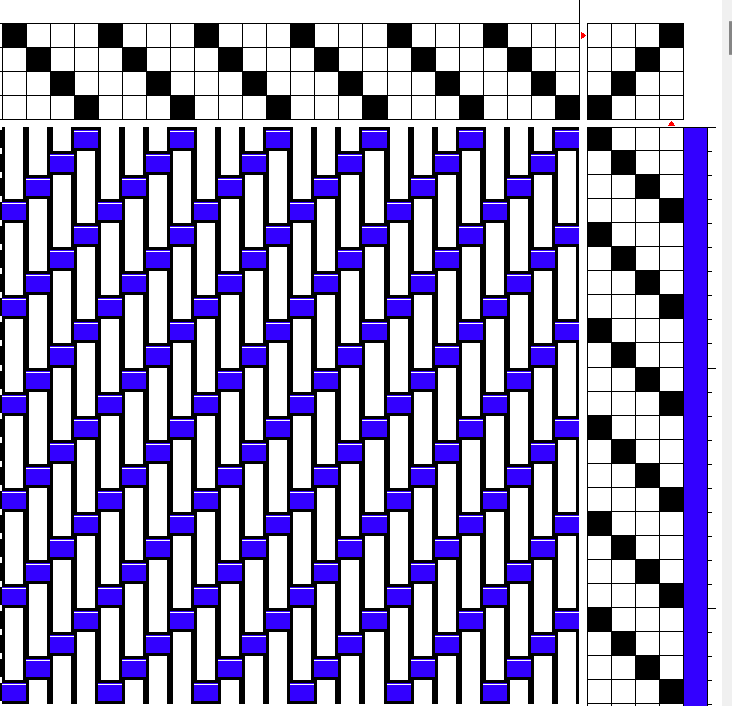
1/3 Twill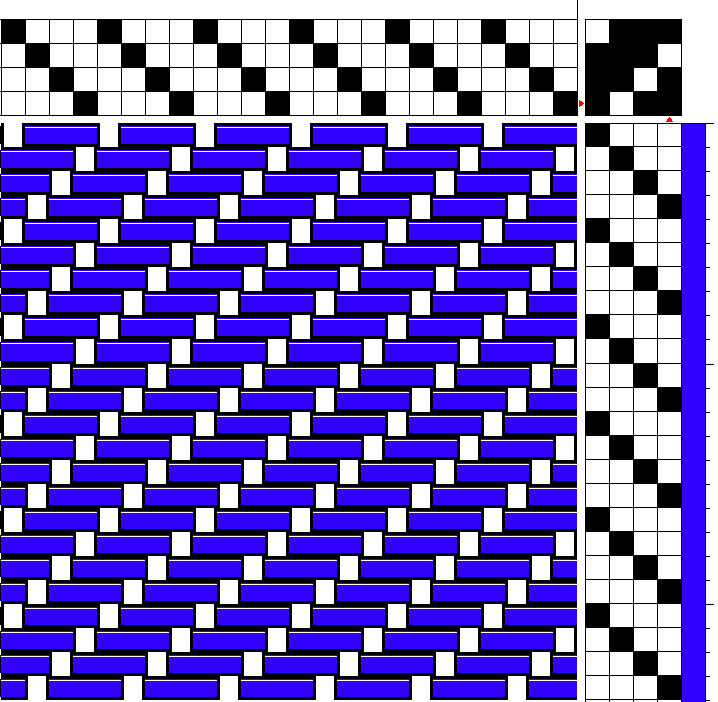
As you can see, in unbalanced twill either the warp or the weft dominates.
3/1 is a warp-faced or warp-dominant structure.
1/3 is a weft-faced or weft-dominant structure.
But when you flip the cloth over...
The back side of 3/1 twill is 1/3 twill; the back side of 1/3 twill is 3/1 twill.
It makes sense: the weft yarn that's not creating a float on the surface is creating one on the back of the cloth.
This means that unbalanced twills are not reversible. This can be used strategically--picture a scarf where one side is dominated by the weft colour and the other is dominated by the warp colour.
Or you could change which set of threads dominates, like this...
Straight Twill
The simplest form of twill is called straight twill.
This twill is threaded in "straight draw".
Threading 1-2-3-4 gives you straight twill with the diagonal slanting to the right.
Threading 4-3-2-1 gives you straight twill with the diagonal slanting to the left.
Point Twill Threading
So if we know we can change the slant of the diagonal by changing the direction of the threading, why not combine the left twill and right twill into one threading draft?
This is called "point twill", because the threading is pointy.
You can see here how point twill threading creates horizontal zigzags where the opposing directions of twill meet.
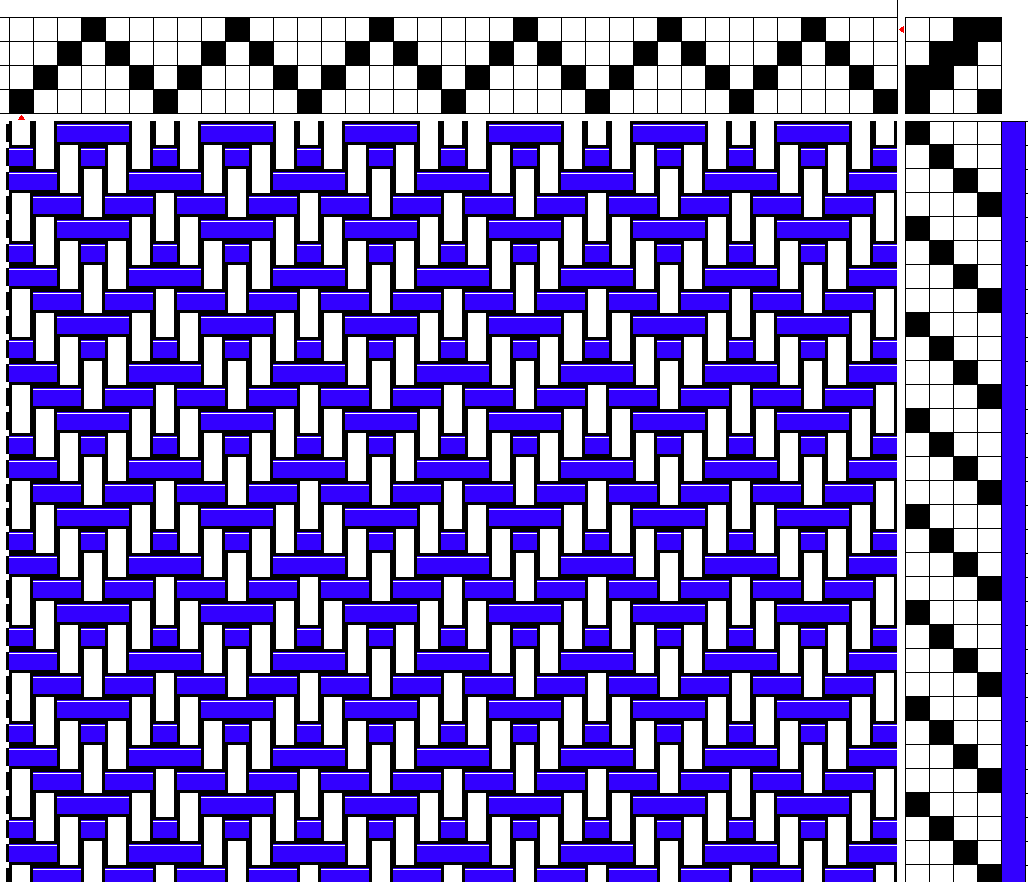
Point Twill Treadling
Up to this point we've only talked about threading, but there's also treadling to play with!
One important thing to know about twill is any twill threading patterns work as twill treadling patterns.
If we put the threading back to straight draw and use the point twill order in the treadling instead, we get vertical zigzags.

Point Twill Both Ways!
So if point twill threading makes horizontal zigzags and point twill treadling makes vertical zigzags, what happens when you do both at the same time?
The angles combine to create diamonds!
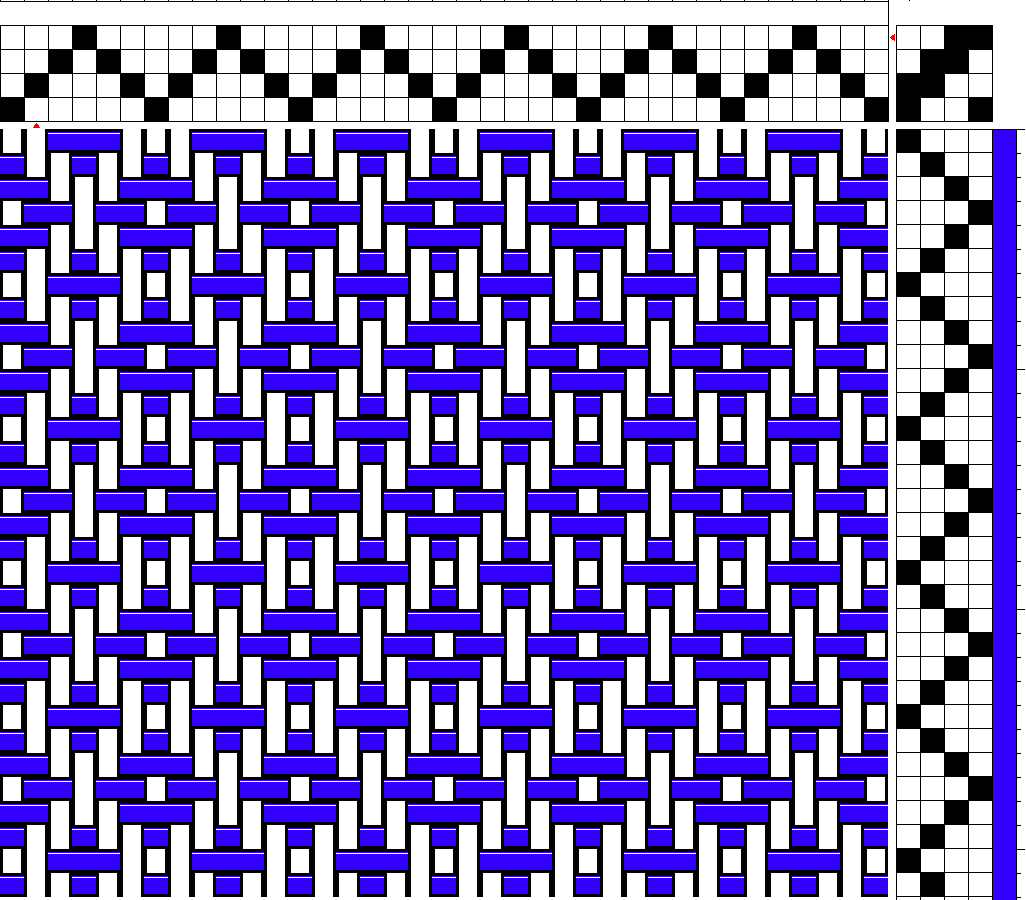
Twilight Twill Scarf
We put these threadings to good use in our Twilight Twill Scarf. The direction of the threading changes with every colour change in the warp, and the direction of the treadling changes with every colour change in the weft. This creates subtle diamond shapes in the structure that give movement and life to the plaid.
Twill Basics
Straight twill and point twill are the basic building blocks of twill. By stretching and combining them, we can bend the diagonal lines of twill to create different shapes and patterns.
The direction of diagonal lines can be changed by altering either threading or treadling, and the direction can be changed at any point in the twill progression.
Twill patterns can be used in both threading and treadling interchangeably to explore all of the design options available.
There are many more forms of Twill.... Herringbone, Ms and Ws, Wall of Troy, Extended Twill, Undulating Twill.... and we explore all of these in our new online video course (coming winter 2024).
Sett for Twill
Twill generally uses a denser sett than plain weave.
Because twill involves weft floats, there are fewer interlacements per inch in twill than in plain weave. That means the structure is a bit more open... and that means you can cram more warp ends in there more easily.
Good sett is a range of options, not one clear answer.
Twill and Draw-in
Because twill has fewer intersections per inch than plain weave, it is more prone to draw-in.
The regular intersections in plain weave almost force the edges of the cloth outward. Twill is more open, so it can draw in more.
If you're aiming at a specific width, add a little more to your calculations for twill. It's not much--I'd say maybe 1/2" to 3/4" on an average width project.
Draw in is a normal part of weaving and not something to fight unless you're getting badly pinched edges or broken threads.
For example, we recommend setting 8/2 cotton between 16 and 20 ends per inch (epi).
The middle of the range (18 epi) will work for both plain weave and twill. The upper end (20 epi) will be better suited to twill, and the lower end (16 epi) better suited to plain weave.
When in doubt, go in the upper half of the recommended sett range for a given fibre when weaving twill.
When choosing a sett, always remember your intended outcome and your preferences.
Maybe you want super gauzy, open twill. Maybe you want super firm plain weave. That's cool!
Your taste, your judgment and your experience are always more important than numbers on a chart.
Using a Floating Selvedge
Floating selvedges are not required for many twills.
It is usually possible to find a starting point in your twill progression where the weft always catches the selvedge.
If this is not possible, it can be made possible by sacrificing an end or two of warp.
don't use a floating selvedge when...
- I'm doing yardage and need speed
- I'm weaving straight or simple point 2/2 twill
- I have plain weave picks mixed into the twill
I do use a floating selvedge when...
- I'm weaving a sampler or gamp
- I'm varying my treadling in unpredictable ways
I like to wind my floating selvedge with the rest of my warp, and beam it just like any other thread. Others prefer not to beam it, and hanging it off the back beam with a weight.
Always sley your floating selvedge in its own dent of the reed.
When weaving, bring your shuttle in under the floating selvedge on your entry side, then out over the floating selvedge on the opposite side.
Maintain this under-over-under-over pattern.
